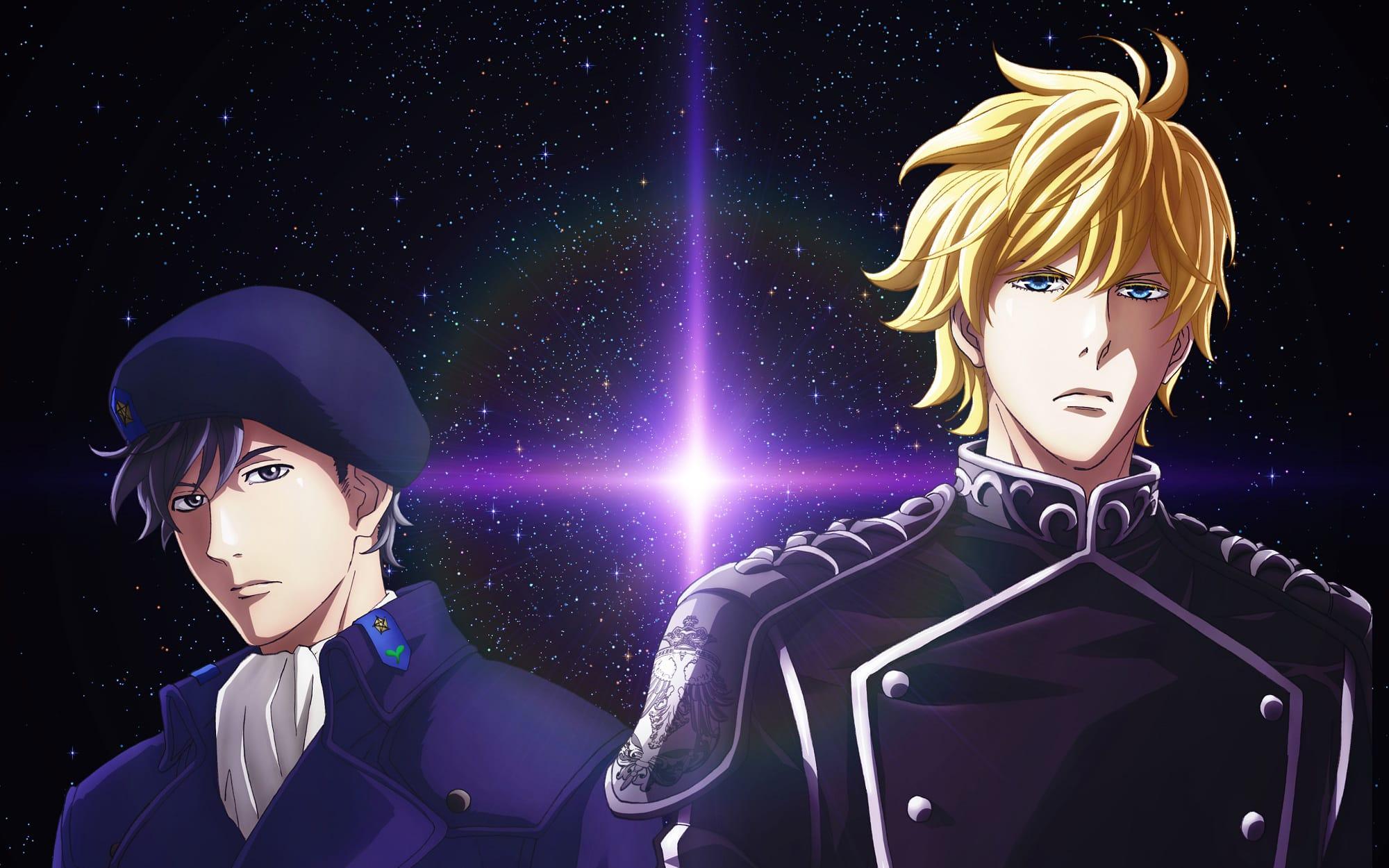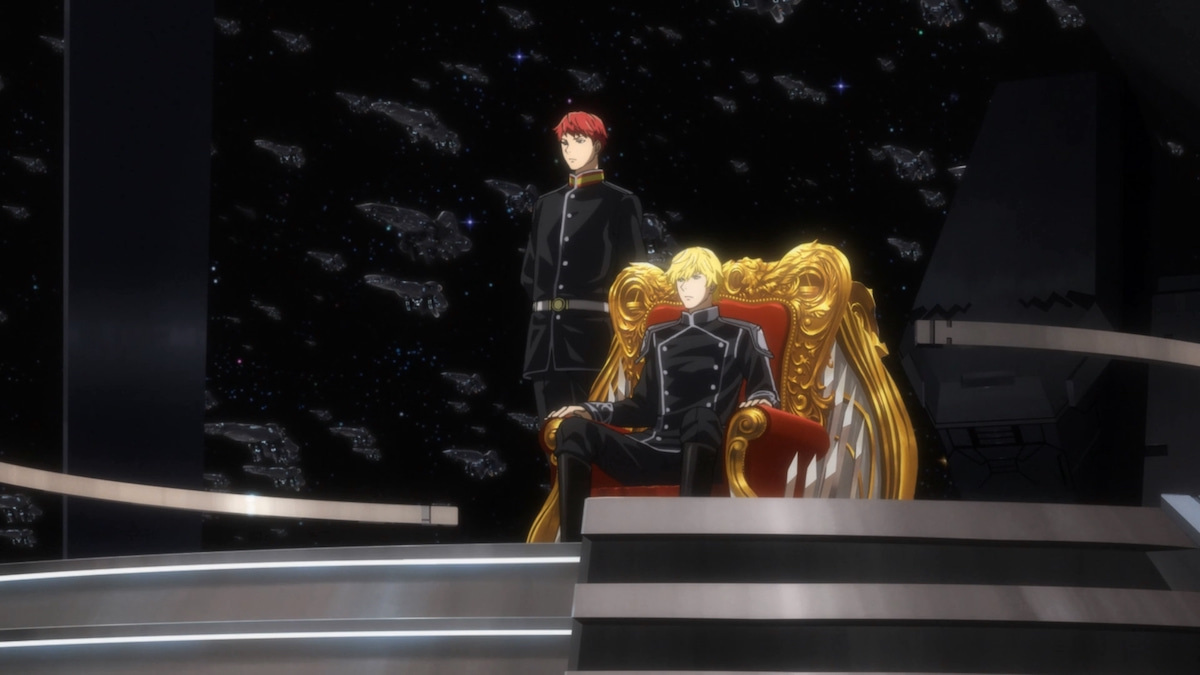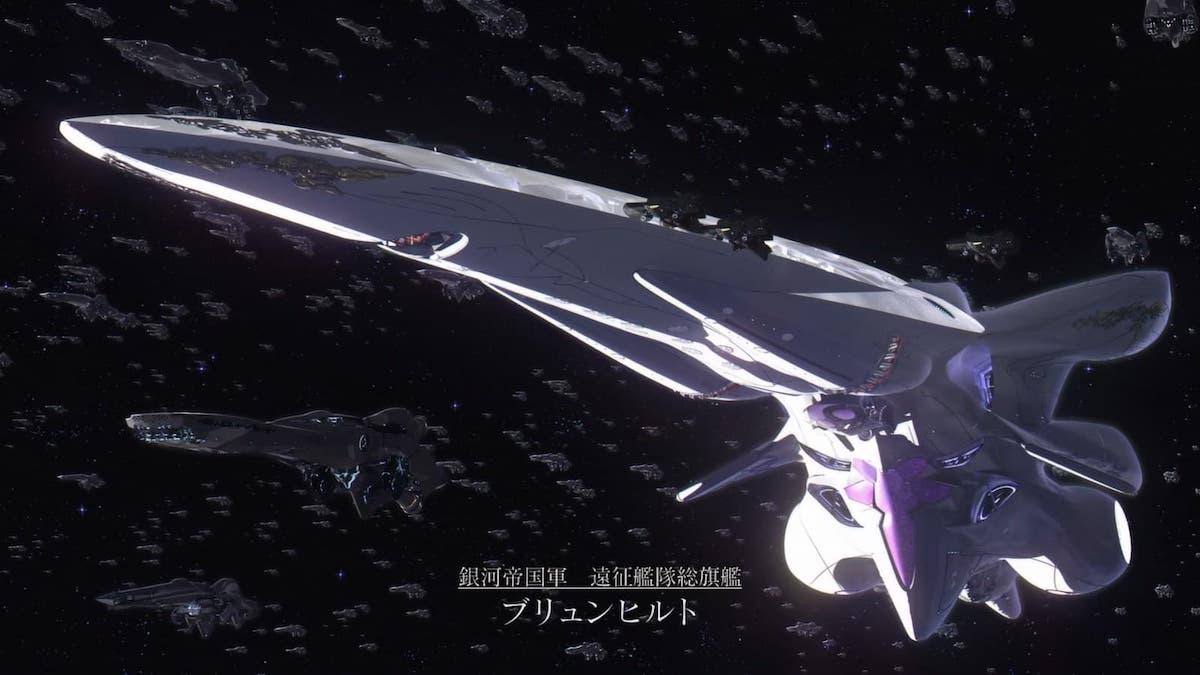Legend of the Galactic Heroes: Die Neue These by Shunsuke Tada (Review)

Several years ago, I saw Legend of the Galactic Heroes described as the greatest anime series that no one’s ever seen, mainly because there was no domestic license for it at the time. Based on Yoshiki Tanaka’s sci-fi novels, the anime was a sprawling space opera — 110 episodes released between 1988 and 1997 — about a massive conflict between two rival nations, and the famous admirals who led their fleets. I promptly filed it away under “Anime Series That Maybe I’ll See Someday” and got on with my life.
Jump ahead to around 2021, when I saw that Crunchyroll was streaming Legend of the Galactic Heroes: Die Neue These, a modern remake produced by legendary studio Production I.G (Ghost in the Shell, Psycho-Pass, Zillion) — which was reason enough for me to check it out. I haven’t read Tanaka’s novels and I’ve only seen snippets of the original Legend of the Galactic Heroes on YouTube, so I can’t speak to how faithful Die Neue These is to its source material or how well it compares to the earlier anime. On its own merits, though, Die Neue These really scratches my personal itch for sprawling, galaxy-spanning space opera.
I’m a sucker for good world-building, and Die Neue These is nothing if not an elaborate world-building exercise. 1,500 years from now, humanity has left a ruined Earth and spread throughout the galaxy, and in the process, split into several factions. The most powerful of these factions are the Galactic Empire and the Free Planets Alliance. The former is ruled by a complex aristocracy modeled on 19th century Prussia (which also explains the fancy castles and quaint villages dotting imperial planets and why its citizens have names like Hildegard, Fritz, and Wolfgang). The latter broke away from the Empire nearly 300 years before the series’ events to establish a democratic society in another region of the galaxy. And for 150 years, these two great powers have been at constant war with each other.

From this unending war, two great figures emerge: the Empire’s Reinhard von Lohengramm and the Alliance’s Yang Wen-li. Both are young upstarts who’ve become increasingly popular as brilliant admirals even as their unorthodox strategies and policies rankle the old guard. Lohengramm is frequently dismissed as “the blonde boy,” a lowborn noble who only gained his position because his sister is the emperor’s favorite concubine. Yang, on the other hand, is more concerned with preventing casualties than achieving great victories, and his lackadaisical attitude often runs afoul of the military and political hard-liners.
Both men — who develop a mutual respect for each other — are complex, fascinating characters. Lohengramm’s military prowess and ambition stem from an intense hatred of the current aristocracy, a hatred that began when his sister was sold to the emperor. With the aid of his best friend and confidant, Siegfried Kircheis, Lohengramm has vowed to overthrow the nobility and establish a new galactic dynasty. As for Yang, his passion for history grants him valuable military insights, but it also makes him suspicious and cynical of political power, even within the democratic Free Planets Alliance — a suspicion that seems justified as various conspiracies begin to reveal the rot at the heart of the Alliance.
Lohengramm and Yang are the series’ protagonists — I’d even argue that Lohengramm, whose ambitions are more dramatic and rooted in something deeply personal, is the true driver of the series’ events — but a lot of screen time is also spent on their various colleagues, comrades, and opponents. This includes Kircheis and the rest of Lohengramm’s inner circle; Yang’s staff, including his brilliant young ward Julian Mintz; and the various nobles and politicians that both help and hinder Lohengramm and Yang, respectively. And to make things even more complicated, two other factions lurk in the shadows with their agendas: the officially neutral planet of Fezzan and the Terraist Church, a bizarre cult devoted to re-establishing Earth as humanity’s true home.

So yes, Die Neue These gets pretty convoluted, and thankfully every character is accompanied by on-screen text denoting their name, rank, and allegiance. (Yoshimitsu Shimoyama’s portentous narration also helps fill in some gaps.) But as you’d hope and expect from a series titled Legend of the Galactic Heroes, it’s filled with epic, multi-episode-spanning space battles waged between fleets comprised of tens of thousands of vessels and even some Death Star-like moon bases for good measure. Which, frankly, is pretty awesome to watch.
(Note: The series uses very little technobabble and for all its world-building, almost no time is spent discussing the technology onscreen. Star Trek, this most certainly is not. But given the number of ships in all of those space battles, which are lovingly rendered by Production I.G’s CGI artisans, it’s safe to say that humanity is pretty advanced in the 36th century.)
But for every grand space battle, there are also episodes in which Lohengramm, Yang, and other characters do little more than discuss military strategies and political theories; philosophize about democracy, freedom, and human history; debate the purpose of the military and the nature of duty; negotiate treaties and alliances; and foment political and cultural unrest. In other words, epic space battles aside, Die Neue These is a very talky series — and I appreciate how even seemingly boring debates deepen the series’ world.

I’d never consider Legend of the Galactic Heroes gritty or hard-boiled, it does get quite dark at times, be it Lohengramm’s willingness to employ morally questionable tactics in his all-or-nothing battle against the corrupt aristocracy or the Free Planet Alliance’s slow, inexorable slide from democracy to demagoguery, populism, and fascism. (The latter hits surprisingly close to home at times given the American Right’s own actions, including its embrace of Trump and culture war politics.)
The series does walk a fine line, though, and the darker political intrigue can seem out-of-place with the rather conventional animation and design. That, and given the number of characters and storylines, it’s hard to keep track of all of the machinations that are going on even with the aforementioned narration. Die Neue These doesn’t always succeed when juggling Lohengramm and Yang’s respective storylines, and as a result, one or the other will essentially be sidelined to make room for everything else going on. (For instance, Lohengramm is essentially a background character for much of season three, which feels weird given his prominence in earlier seasons.) Regardless, there’s no denying the scope and ambition here, both in terms of world building and storytelling.
With just four seasons and 48 episodes so far, I surmise that Die Neue These isn’t even halfway through its storyline. (Based on what I’ve read of the original series’ storyline, anyway.) No release date has been announced for season five, though based on previous seasons, it might not arrive until sometime in 2025. In any case, I’m definitely looking forward to seeing how Lohengramm and Yang’s stories continue to play out, be it establishing a new galactic order at the possible cost of one’s soul or defending a democracy that may no longer be worth defending.